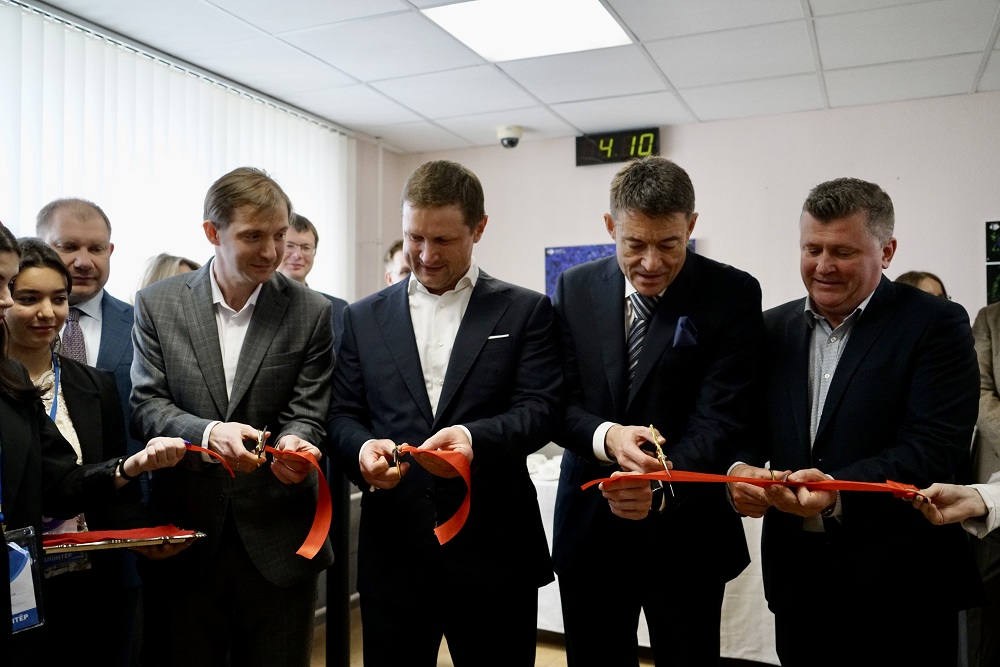Tissue architecture, cell organization, biomedical products: RUDN University opens a new research and educational resource center

The center’s scientists will conduct molecular morphological studies using spatial phenotyping, multispectral imaging, ultra-high resolution imaging, bioinformatic analysis, and digital pathology. The site of innovative immunophenotyping technologies is equipped with equipment for in situ multiplex analysis at various levels of the organization of living systems.
“It is no coincidence that we decided to organize such a resource center at the Peoples’ Friendship University of Russia. RUDN, as a modern international research university, should have comprehensive competencies for conducting fundamental scientific research. We hope that the Center for Molecular Morphology will become one of the growth points of interdisciplinary research projects,” said Oleg Yastrebov, RUDN University Rector.
“This direction can create conditions not only for the implementation of high-tech projects, but also for research with a clinical perspective, with the development of new tactics of personal treatment, original treatment methods depending on the individual sensitivity of tumor cells to specific drugs, actually using a ‘super-personalized’ approach. I hope that the results of the work of the resource center will be useful for patients,” said Prof. Andrey Kaprin, Academician of the Russian Academy of Sciences (RAS), Director General of the Federal State Budgetary Institution of the Ministry of Health of the Russian Federation, Chief oncologist of the Russian Federation.
“Our efforts to form a high-tech infrastructure of the Research and Educational Resource Center are associated with the most important prospects for advanced and breakthrough research in translational medicine. Creating conditions for a new understanding of the fundamental mechanisms of adaptive and pathological processes will significantly advance in improving the effectiveness of diagnostic and therapeutic algorithms of personalized medicine,” said Andrey Kostin, First Vice-Rector, Vice-Rector for Research of RUDN University.
Dmitry A. Atyakshin, MD, Advisor to the RUDN Rector’s Office for Biomedical Projects, has been appointed Director of the Research and Educational Resource Center for Immunophenotyping, Digital Spatial Profiling and Ultrastructural Analysis Innovative Technologies.
After the opening ceremony, a scientific round table “Spatial phenotyping and multispectral visualization in translational aspects of personalized medicine” was held, which is dedicated to the search for methods of work in the resource center. It was attended by:
- L. Buravkova — Deputy Director of the Institute of Biomedical Problems, Russian Academy of Sciences, Head of Cell Physiology Lab. Professor, Faculty of Basic Medicine, Moscow State University.
- A. Kaprin — Academician of the Russian Academy of Sciences (RAS), Director General of the Federal State Budgetary Institution of the Ministry of Health of the Russian Federation, Chief oncologist of the Russian Federation.
- A. Kostin — First Vice-Rector, Vice-Rector for Research of RUDN University.
- M. Mikhaleva — the Head of Morbid anatomy department, Municipal Clinical Hospital № 31, Moscow; the head of the laboratory of clinical morphology, Research Institute of Human Morphology, Moscow.
- S. Morozov — a leading researcher at the Veltischev Research and Clinical Institute for Pediatrics and Pediatric Surgery of the Pirogov Russian National Research Medical University.
- D. Nikityuk — Academician of the Russian Academy of Sciences (RAS), Chairman of the Russian medical society of anatomists, histologists and embryologists.
- A. Samoilov — General Director of the Federal State Budgetary Institution “Federal Medical Biophysical Center named after A.I.Burnazyan.
- T. Fatkhudinov — Deputy Director for scientific development of RUDN Institute of Medicine, Head of Department of Histology, Cytology and Embryology of RUDN Institute of Medicine.
The exhibition “One picture is worth a thousand words” has been opened. More than 50 stands show modern trends in molecular imaging of histological sections using histochemical and multiplex immunomorphological staining techniques.
For reference:
The program of development of the biomedical cluster “Translational Medicine” is being implemented at the Peoples’ Friendship University of Russia. RUDN scientists are developing biomedical science on the Digital Medicine platform with breakthrough fundamental research for healthcare and biomedical technologies.
The project to develop a cellular model of the placenta became the winner in the Scientific Materials category of the Young Scientists 3.0 competition, organized with the support of the Presidential Grants Foundation and T-Bank.
Ten scientific journals published by RUDN University have been included in the highest level of the state list of scientific publications, the White List.
Forests are not only the lungs of the planet, but also home to millions of species. However, it has remained unclear how underground interactions between trees and fungi affect forest species richness in different climatic conditions. Previous studies have yielded conflicting results: in some regions, the dominance of certain fungi reduced tree diversity, while in others it increased it.
The project to develop a cellular model of the placenta became the winner in the Scientific Materials category of the Young Scientists 3.0 competition, organized with the support of the Presidential Grants Foundation and T-Bank.
Ten scientific journals published by RUDN University have been included in the highest level of the state list of scientific publications, the White List.
Forests are not only the lungs of the planet, but also home to millions of species. However, it has remained unclear how underground interactions between trees and fungi affect forest species richness in different climatic conditions. Previous studies have yielded conflicting results: in some regions, the dominance of certain fungi reduced tree diversity, while in others it increased it.